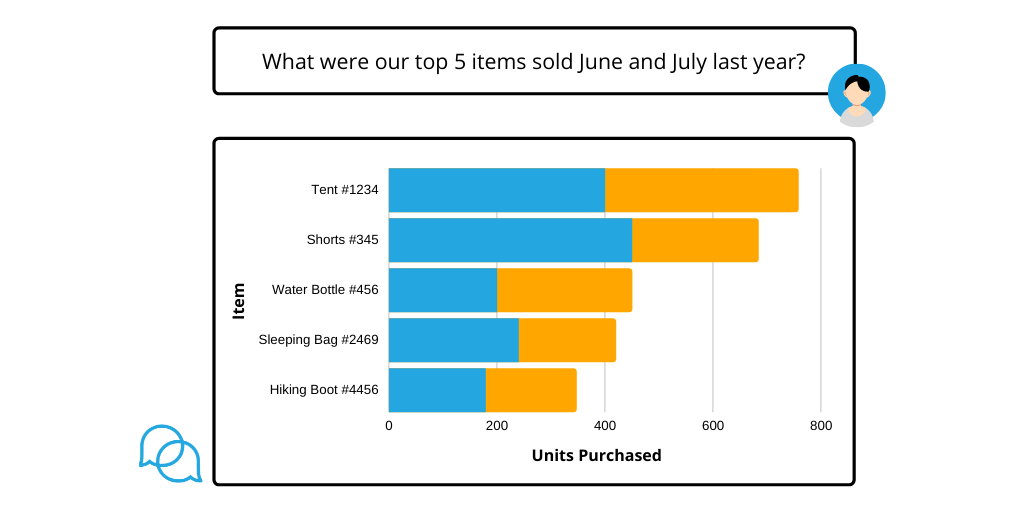AutoQL for Marketing Software Users
~3 minute read
In today’s leading businesses, strong marketing strategies are developed through continuous collaboration between the marketing team other teams within an organization such as the product or sales teams.
Data plays a key role, often serving as a credible and unbiased source, when presenting new ideas across teams and to external partners. Data tells the true story of the outcomes of implemented marketing strategies and it’s critical that presentations include insight-rich data to provide helpful context for future planning.
Data provided by robust marketing software helps teams present a high-level picture of the current state of their efforts. However, insights they derive from their reports and dashboards often lead to more questions, especially when a presentation leads to an in-depth Q&A from an audience of product developers, sales people, or C-level decision makers.
Typically, teams decide in advance which metrics they will highlight in during presentations, or even send reports to members of other teams before the beginning of a strategy meeting. These types of presentations can take days or weeks to put together, but during the meeting itself, questions are bound to arise that fall outside of the information that the marketing team has collected for the occasion.
Read more: Enhancing Digital Marketing Analytics with Intuitive Data Access
With a solution like AutoQL built into their marketing software, team members can quickly ask ad hoc questions related to their data as they arise during discussion. Various team members don’t have to be power users or data analysis pros to quickly access insights in the moment: everyone can just ask the questions they have and receive immediate answers.

Insights available at users’ fingertips support real-time decision-making processes that have major impact on growth and success.
During a strategic planning meeting, team members can ask questions like “What is our total expansion MRR this month?” or “How many units of item X sold this week?” (where item X is a newly launched offering, for example). This allows them to expand on high-level metrics presented in a report or dashboard to get a better picture of what’s going on in real time.
The team can quickly answer questions that come up while new ideas are tossed around. They can ask “What were our top 5 items sold June and July last year?”, “Compare new sign ups from campaign A versus campaign B last quarter” and “Average number of leads converted to paying customers from each marketing channel each month”.
Read more: Streamlining Analytics for Agile SaaS Product Teams
With data on demand, it’s easy for teams to weave data into their strategy meetings in a meaningful way. Instead of hunting around for data to create custom reports or asking the technical team to pull specific information (taking valuable time out of their workflow), cross-functional teams can explore their data in real time, leading to creative decision making that incorporates data-driven strategy.
For marketing software providers, adding more flexible and user-friendly data access functionality increases user engagement and satisfaction. When software users can boost their bottom line, they come to rely on their software solution in a new way, leading to enthusiastic evangelism and increased revenue for the software provider.

